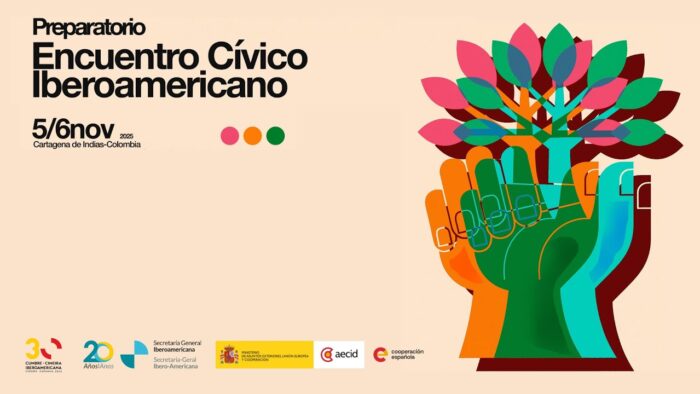Your Excellencies, Prime Minister Mitchell,Heads of Government, CARICOM Secretary-General, CDB President, OECS Director General, and Partners, · It is a privilege for me to join you today to discuss development finance opportunities for Small States and how the blue economy has become the next frontier for economic growth for the Caribbean, as well as other island and coastal countries. · To discuss this, I cannot think of a better setting than being in the beautiful spice island of Grenada. With its rich and pristine coastline and colorful reefs, and understanding of climate risks, Grenada is demonstrating its commitment to inclusive growth and enhancing investment in the Blue Economy. · Often when we meet to discuss development prospects for Caribbean countries, we devote significant attention to common challenges: small scale, high debt, exposure to external shocks, and dependency on fossil fuels. · Today, I would like to focus more on hope and opportunity. Small economies are more open to trade and foreign investment. While they are highly specialized in their export sectors, they are also more nimble and able to change the structure of their economies and exports over time. · In fact, Caribbean countries have been more successful in reinventing themselves than some of the region’s giants. This region managed to find a niche in the highly competitive global industry after it lost its trade preference treatment with Europe in the 1980s. · Today, there is an opportunity for CARICOM countries to find new sources of growth by transitioning to a blue economy and to leverage new sources of financing. · There are a number of important questions that would be useful to reflect on today, but for this discussion I would like to focus on two: 1. What is the blue economy and what opportunities it can offer for growth? 2. How can the World Bank assist the CARICOM countries to leverage new sources of financing in their pursuit of inclusive and sustainable growth? New report: “Toward a Blue Economy: A promise for sustainable growth in the Caribbean” · Ocean assets and services are drivers of economic growth: The Caribbean Sea generated US$407 billion in gross revenue in 2012, equivalent to almost 18 percent of Caribbean GDP, including mainland Caribbean coastal countries. This comes from marine tourism, oil and gas, maritime shipping, fishing, etc. · Caribbean island and coastal states may be small in terms of population and land area, but large when it comes to marine area. In fact, they are ‘Great Ocean States’. For example, St. Lucia’s ocean area is over 7 times greater than its land area and for Grenada over 70 times greater. · Ocean Health = Ocean Wealth Harnessing marine resources while preserving the Caribbean Sea’s health, can help countries address key challenges such as high unemployment, low growth, food security, poverty and resilience to climate change. – 1.5 million people rely on fishing for their livelihood and fish for food security; – Reefs such as Belize Barrier Reefs reduce 75% of destructive capabilities from storm surges – Marine Tourism directly and indirectly supports two million direct and indirect jobs and generates over US$ 40 billion annually to Caribbean islands alone. · With a growing population, demand for seafood and aquaculture production will increase, shipping traffic and tourism will continue to grow, and new ocean industries will emerge. · If we look globally, ocean based industries such as fisheries, tourism, and shipping drive global trade, and annually contribute around 3 percent or $1.5 trillion in value added globally. · If “Thinking green” was the focus of the past decade, Small Island Developing States and Coastal Economies are now starting to “think blue”. · This report identifies key priorities to generate blue growth, while ensuring that oceans and marine ecosystems are sustainably managed and used. · Already the impacts of overfishing, coastal development, pollution and climate change are being felt by coastal communities around the world: about 75 percent of the region’s coral reefs are considered to be at risk from human activity and 85 percent of wastewater enters the Caribbean Sea untreated. · Tourists come to the Caribbean region largely for its beautiful beaches and sea attractions, which puts tremendous pressure on the very coastal ecosystems that drive economies. · A successful transition to a blue economy would mean that countries could better measure the region’s rich marine resources, better manage its ocean space, and ultimately achieve greater growth and prosperity from sound management of the ocean. Three recommendations are: 1) Identify, value and map ocean assets: This will allow countries to better manage their ocean wealth and develop smart policies to promote a healthy, resilient and productive marine environment: marine special plans like OECS countries are planning to do with our support. 2) Regional integration and cooperation is essential to drive economic growth from the Caribbean Sea: This is particularly important as many ocean assets are transboundary in nature (fisheries; shipping; minerals; oil and gas; biodiversity). The Eastern Caribbean Regional Ocean Policy is a good framework that can help countries pool resources and more effectively manage their ocean wealth. 3) Promoting private sector investments in blue economy: This means creating enabling conditions for private investment in ocean industries; building ‘blue green’ infrastructure (e.g. building a port using natural mangrove barriers); and supporting ocean MSMEs to generate ‘blue jobs’. · Your Excellencies, in our view, there has never been a better time than now for the coastal and island nations to invest in the transition to a blue economy. I would like to congratulate many of you for the important steps that you are already taking. This brings me to the second question; how can the WBG leverage new sources of financing in support of growth? · In recent years, small states have taken a collective stand in international fora to highlight the development challenges they face and urge more attention to their concerns. · In response, the World Bank Small States initiative, now chaired by Grenada, has developed a roadmap for World Bank Group Engagement with Small States which identifies priorities for engagement including: predictability of affordable financing; access to new and existing climate financing; and capacity building among others. · We are working with different partners in the region and across the globe to find ways to make these priorities become concrete actions. · For example, together with the Organization of the Eastern Caribbean States Commission, we have secured over $6 million in additional Global Environmental Facility grants to support the implementation of regional activities of the Eastern Caribbean Regional Oceans Policy (ECROP). A comprehensive marine spatial plan is expected to be prepared and adopted under this program. The Caribbean states also require special financing to help them address common vulnerabilities. This means combining both public and private financing. 1. In the context of small, open and highly volatile economies, continued efforts on fiscal consolidation and structural reforms are essential to free up greater public financing for growth. A few countries in the region have taken concrete measures that will allow them to save in good times so that they can respond fast when the need arises. Grenada has recently adopted a medium-term fiscal framework anchored on clear spending rules, While Saint Vincent and the Grenadines has established a contingent fund within the state budget that will be used exclusively to respond to disasters. 2. Leveraging private finance in the face of increasing volatility is indeed challenging. The World Bank Group is addressing this by working on operationalizing a new approach to development financing. · We will be devoting more resources to help governments create the right conditions for boosting private investments in transport, connectivity, technology, as well as climate resilience. · We are also using concessional finance through the International Development Association (IDA) in innovative ways to mitigate risk, and blend finance to support private sector investment. This includes the new IDA 18 Private sector window, which will leverage $2.5 billion in IDA capital to mobilize at least $6-8 billion in private sector investments in the poorest and most fragile markets over the next three years. · In addition, under the three year IDA18 cycle, starting from July 1, US$630 million will be available to six eligible CARICOM countries: Dominica, Grenada, Guyana, Haiti, Saint Lucia, and Saint Vincent and the Grenadines. This is tripling of resources available under the IDA17 cycle providing a unique opportunity to earmark resources in support of regional and country priorities. · For the first time, IDA 18 also provides enhanced crisis response facilities and instruments that will be available to small states: The Catastrophe Deferred Drawdown Option (CAT-DDO) is a contingent financing line that until now was only offered to IBRD countries. It provides immediate liquidity to countries after a catastrophe. · To build resilience, the Caribbean Catastrophe Risk Insurance Facility is another example of effective and attractive risk pooling mechanism able to mobilize emergency funds within the first two weeks of a disaster. Several countries, including Haiti, are members and have used this Facility. · In closing, I would like to reiterate the World Bank Group’s continued and deep commitment to work as your partners in support of country and regional priorities. · At present, committed financing under World Bank assisted ongoing projects amounts to $1.5 billion in the region, out of which almost $1 billion is IDA concessional financing. This is complemented by analytic and knowledge support such as the Blue Economy report I discussed today. · Your Excellencies, this is a special time for CARICOM and its member-states to come together and join forces in the pursuit of stable growth, while leading the transition to a blue economy. · I look forward to an energizing and engaging discussion. · Thank you once again for inviting me to participate in this forum. Read the report: Towards a Blue Economy


